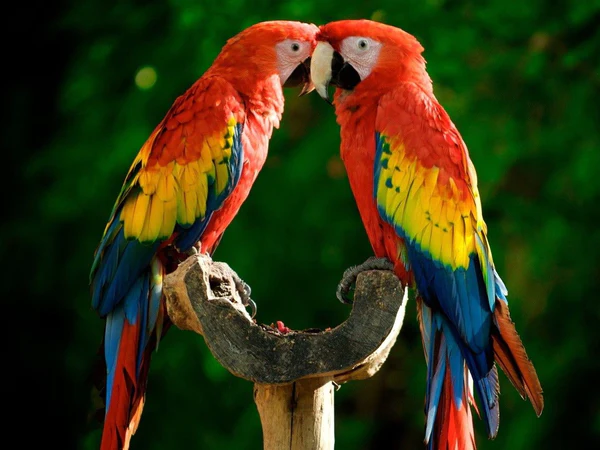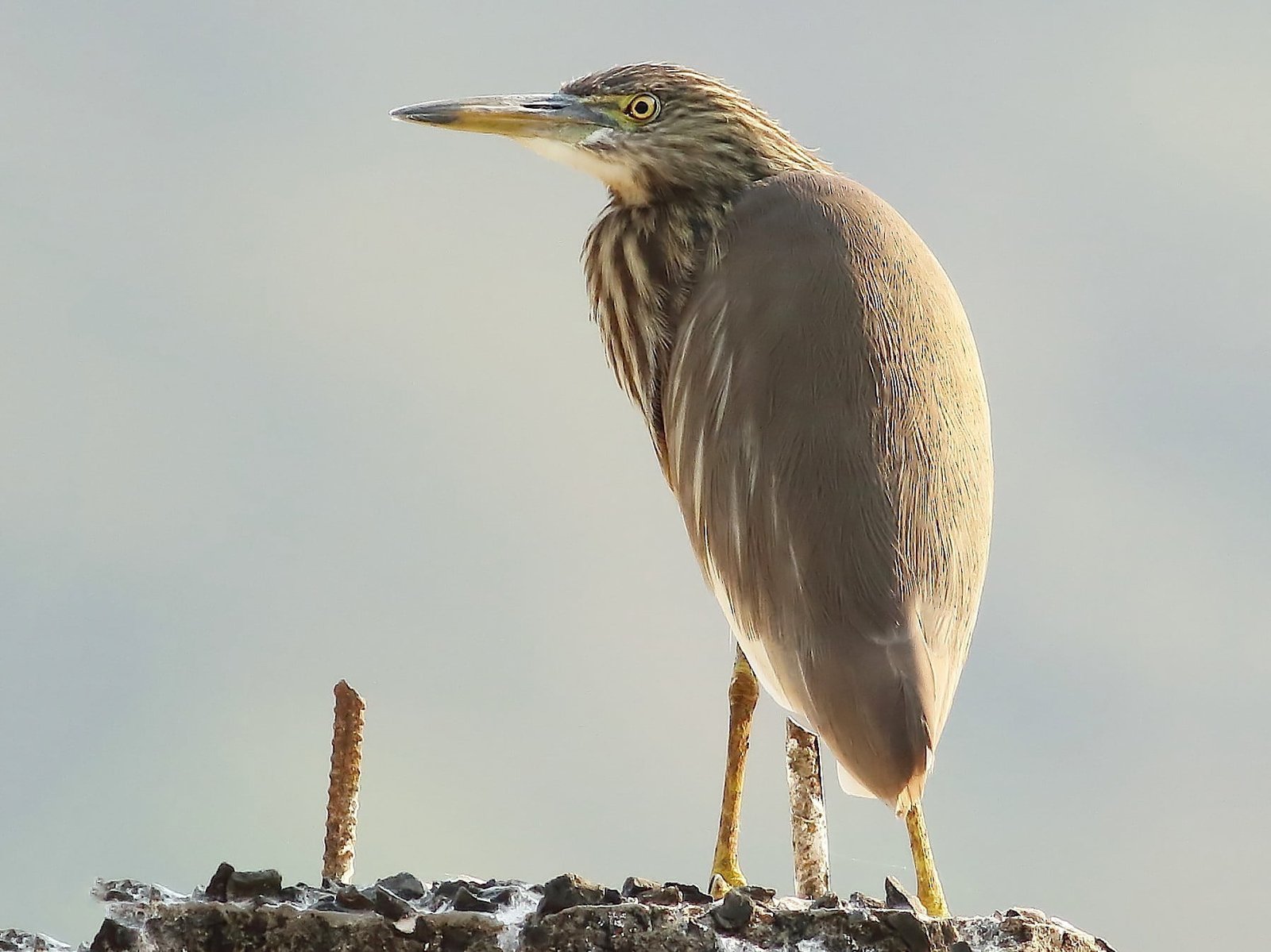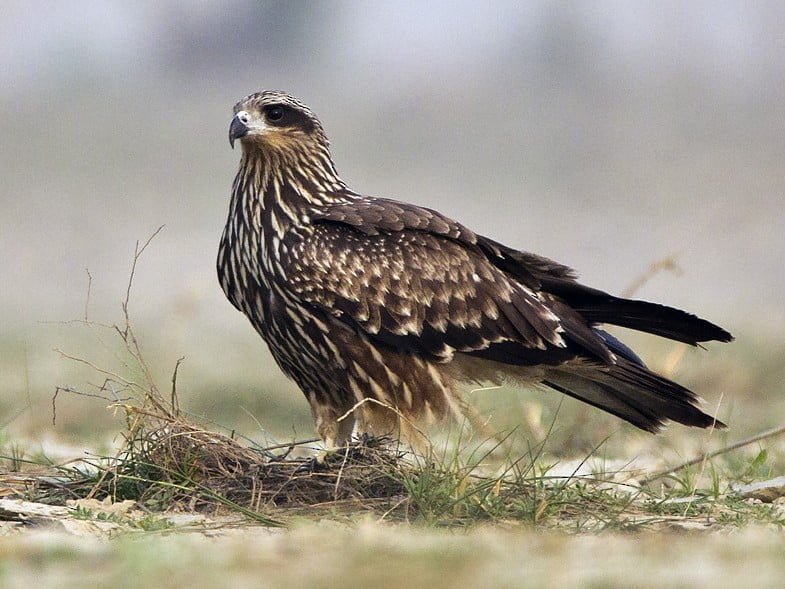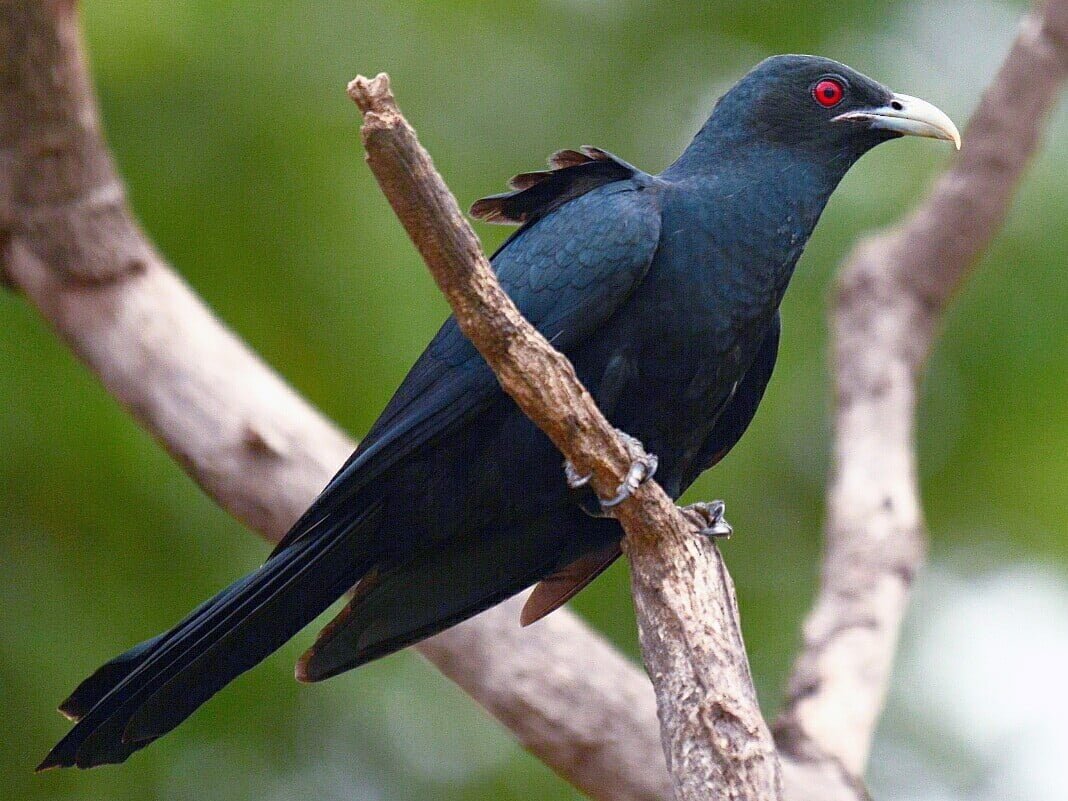Parrots Bird Facts, Behaviour, Habitat, Conservation

Parrots Bird Facts | Description | Distribution and Habitate | Conservation | Behaviour and Ecology | Interaction with Human | Cultural | Interesting facts | frequently asked questions about parrots
Looking for a feathered friend that’s both beautiful and intelligent? Look no further than parrots! These stunning birds boast a rainbow of colors and are known for their remarkable cognitive abilities, making them a popular choice for pet owners and bird enthusiasts alike. With over 350 different species to choose from, parrots offer a diverse range of personalities and skills, from mimicking human speech to performing impressive tricks. Whether you’re seeking a loyal companion or a fascinating creature to observe, parrots are sure to captivate you with their unique charm and intelligence. So why not explore the wonderful world of parrots today and discover the perfect avian companion for you?
Taxonomy of Parrots
| Kingdom | Animalia |
|---|---|
| Phylum | Chordata |
| Class | Aves |
| Order | Psittaciformes |
| Family | Psittacidae |
The order Psittaciformes includes over 400 species of parrots, macaws, cockatoos, and other related bird species. The family Psittacidae includes the majority of parrot species, with over 90 genera and around 365 different species.
Morphology of Parrots
| Feature | Description |
|---|---|
| Size | Small to large, ranging from 10 cm (4 in) to 100 cm (39 in) |
| Weight | Varies depending on species, ranging from 28 g (0.99 oz) to 1.6 kg (3.5 lb) |
| Wingspan | Varies depending on species, ranging from 20 cm (8 in) to 100 cm (39 in) |
| Body Shape | Compact, stocky bodies with short necks and broad, hooked bills |
| Feathers | Brightly colored feathers, often with striking patterns and bold contrasts |
| Feet | Zygodactyl, meaning two toes face forward and two toes face backward, allowing for strong grip and dexterity |
| Eyes | Large and expressive, with excellent color vision |
| Beak | Strong, curved beaks for cracking open nuts, seeds, and fruit |
| Tail | Long, often pointed tails for maneuvering and balance during flight |
| Sexual Dimorphism | Varies depending on species, with some showing differences in size, color, or feather patterns between males and females. |
It’s important to note that these characteristics can vary depending on the specific species of parrot.

Description of Parrots
Parrots are a group of highly intelligent and colorful birds that belong to the Psittaciformes order. These fascinating creatures come in a wide range of sizes, with the smallest species being just a few inches long, while the largest can grow up to 1 meter in length. Parrots are known for their strikingly beautiful feathers, which come in a rainbow of colors, patterns, and textures. Their feathers are often used for flight, communication, and display, and are one of the defining features of this bird.
In addition to their unique appearance, parrots also possess a number of other remarkable traits. They are known for their incredible cognitive abilities, which allow them to learn complex tasks and even mimic human speech. They also have zygodactyl feet, which means they have two toes facing forward and two facing backward, providing them with excellent grip and dexterity for climbing, perching, and manipulating objects.
Parrots are social creatures and thrive in environments where they can interact with others. They form strong bonds with their mates and communicate with a variety of vocalizations, body language, and displays. They also have a varied diet that typically includes fruits, seeds, nuts, and vegetation.
Overall, parrots are captivating birds that possess a unique combination of beauty, intelligence, and social skills. Whether as pets or in the wild, they are a joy to observe and are sure to captivate bird enthusiasts and animal lovers alike.
Distribution and habitat of Parrots
Parrots are found across the globe, with the majority of species inhabiting tropical and subtropical regions of South America, Central America, the Caribbean, and Australasia. Some species have also been introduced to other parts of the world as pets or escaped birds.
In South America, parrots are found in a range of habitats, including rainforests, savannas, and deserts. Many species are also found in the Andes Mountains. In Central America and the Caribbean, parrots can be found in forested areas and on islands, while in Australasia, they inhabit forests, woodlands, and scrublands.
Parrots are highly adaptable birds and are known to thrive in a variety of environments, from dense rainforests to arid deserts. They are able to adjust their diets and behavior to suit the resources available in their habitats, which can include fruits, seeds, flowers, and insects.
Unfortunately, many parrot species are threatened or endangered due to habitat loss, hunting, and the pet trade. Conservation efforts are underway to protect these beautiful birds and ensure their survival for future generations.
Behaviour and Ecology of Parrots
Parrots are highly intelligent and social birds that display a wide range of fascinating behaviors and ecological interactions. Here are some key aspects of their behavior and ecology:
- Social Behavior: Parrots are highly social birds and often live in flocks of various sizes. They form strong bonds with their mates and communicate with each other using a variety of vocalizations, body language, and displays.
- Communication: Parrots are known for their remarkable ability to mimic human speech and other sounds. They use vocalizations to communicate with their mates and flock members, as well as to establish territory and attract mates.
- Feeding Behavior: Parrots have a varied diet that includes fruits, seeds, nuts, and vegetation. They have strong beaks that allow them to crack open hard nuts and seeds, and they use their zygodactyl feet to hold food while they eat.
- Reproduction: Parrots typically mate for life and form strong bonds with their partners. They lay eggs in nests, which are often located in tree cavities or other protected areas.
- Ecological Interactions: Parrots play important roles in their ecosystems, helping to disperse seeds and pollinate flowers. They are also preyed upon by a variety of predators, including birds of prey and mammals.
Unfortunately, many parrot species are threatened or endangered due to habitat loss, hunting, and the pet trade. Conservation efforts are underway to protect these beautiful birds and ensure their survival for future generations.
Conservation of Parrots
Parrots face numerous threats to their survival, including habitat loss, hunting, and the pet trade. As a result, many parrot species are endangered or critically endangered. Conservation efforts are critical to protect these birds and ensure their survival for future generations.
Here are some key conservation strategies for parrots:
- Habitat Protection: Protecting the habitats where parrots live is essential for their survival. This can include creating protected areas, such as national parks or reserves, and implementing measures to prevent habitat destruction and degradation.
- Anti-Poaching Measures: Hunting and poaching are major threats to parrots, and efforts to reduce these activities are critical for their survival. This can include enforcing laws against hunting and poaching and working with local communities to promote alternative livelihoods.
- Education and Awareness: Raising awareness about the importance of parrot conservation is critical for their survival. This can include education programs in schools and communities, as well as outreach efforts to raise awareness about the threats facing parrots.
- Captive Breeding and Release Programs: Captive breeding and release programs can help to increase the populations of endangered parrot species. These programs involve breeding parrots in captivity and releasing them into the wild to supplement wild populations.
Overall, conservation efforts are essential to protect parrots and ensure their survival for future generations. By working together to protect these remarkable birds, we can help to ensure that they continue to thrive for years to come.
Interaction with Human of Parrots
Parrots have a long history of interacting with humans, both as pets and as subjects of scientific study. Here are some key aspects of their interaction with humans:
- Pet Trade: Parrots are popular pets due to their beauty, intelligence, and ability to mimic human speech. However, the pet trade can have negative impacts on wild populations, as many parrots are captured from the wild and sold as pets. This can lead to declines in wild populations and loss of genetic diversity.
- Scientific Research: Parrots are also important subjects of scientific research, due to their high intelligence and complex social behaviors. Studies have been conducted on topics such as communication, cognition, and social behavior.
- Conservation Efforts: Many organizations and individuals are working to protect parrots and their habitats through conservation efforts. This can include habitat restoration, captive breeding programs, and education and awareness campaigns.
- Cultural Significance: Parrots have also played important cultural roles in many societies, including as symbols of wisdom and good luck. They have been depicted in art, literature, and mythology, and have been used in traditional medicines and ceremonies.
Overall, parrots have had a complex and multifaceted relationship with humans throughout history. While they are valued for their beauty and intelligence, it is important to ensure that their interactions with humans are sustainable and do not negatively impact wild populations. Conservation efforts and responsible pet ownership are critical to protecting these remarkable birds for future generations.
Cultural and Historical Significance of Parrots
Parrots have played an important role in many cultures throughout history, serving as symbols of wisdom, beauty, and good luck. Here are some examples of their cultural and historical significance:
- Ancient Cultures: Parrots were prized by ancient civilizations such as the Greeks, Romans, and Egyptians, who believed they were sacred birds associated with deities and royalty. They were also depicted in art and mythology, including as messengers of the gods.
- Indigenous Cultures: Parrots are important cultural symbols in many indigenous cultures around the world. For example, in Australia, the Rainbow Lorikeet is considered a symbol of the rainbow serpent, a powerful spirit in Aboriginal mythology. In Central and South America, parrots have played important roles in traditional medicine and spiritual practices.
- European Royalty: Parrots were popular pets among European royalty and nobility in the Middle Ages and Renaissance. They were kept in luxurious cages and were often depicted in art and tapestries as symbols of wealth and refinement.
- Modern Culture: Parrots continue to be popular pets and are often featured in popular culture, including in movies, TV shows, and books. They are also frequently used in advertising and marketing, due to their bright colors and playful personalities.
Overall, parrots have a rich cultural and historical significance and continue to capture our imaginations with their beauty and intelligence. While it is important to ensure that their interactions with humans are sustainable and do not negatively impact wild populations, we can still appreciate the unique role that parrots have played in human history and culture.
Explanatory Notes for Parrot
Parrots are a group of birds known for their colorful plumage, intelligence, and ability to mimic human speech. They belong to the order Psittaciformes, which includes over 350 species of parrots, macaws, and cockatoos.
Parrots are found in a variety of habitats, including rainforests, deserts, and savannas, and are native to regions around the world, including Australia, South America, and Africa. They feed on a variety of foods, including fruits, seeds, nuts, and insects, and are important seed dispersers in many ecosystems.
Parrots are highly intelligent and social birds, with complex communication and social behaviors. They have been the subject of scientific study for many years, and research has shown that they are capable of problem-solving, tool use, and even self-awareness.
Parrots face numerous threats to their survival, including habitat loss, hunting, and the pet trade. Many species are endangered or critically endangered, and conservation efforts are critical to protect these birds and ensure their survival for future generations.
Despite the challenges they face, parrots continue to capture our imaginations with their beauty and intelligence, and they have played important roles in human culture and history for centuries. By working together to protect these remarkable birds, we can help to ensure that they continue to thrive for years to come.
Interesting facts about Parrots
Here are 10 interesting facts about parrots:
- Parrots are among the most intelligent of all bird species. They are capable of problem-solving, tool use, and even self-awareness.
- Parrots are able to mimic human speech and other sounds with astonishing accuracy, thanks to their highly developed vocal abilities.
- The largest species of parrot is the Hyacinth Macaw, which can grow up to 3.3 feet in length and weigh up to 3.7 pounds.
- Some species of parrot, such as the Kea of New Zealand, are known for their mischievous behavior and have been known to steal food and even vandalize cars.
- Parrots are known for their bright, colorful plumage, which serves as a form of communication and helps them attract mates.
- Many species of parrot are monogamous and mate for life, with both parents sharing in the care of their young.
- Parrots have a unique digestive system that allows them to extract nutrients from tough seeds and nuts that other birds cannot digest.
- Some species of parrot, such as the African Grey Parrot, have been shown to have the cognitive ability of a young child, with a vocabulary of hundreds of words and the ability to understand complex concepts.
- Parrots are important seed dispersers in many ecosystems, as they consume fruits and seeds and then excrete them in different locations.
- Some species of parrot, such as the Kakapo of New Zealand, are flightless, making them vulnerable to predators and other threats.
General queries or frequently asked questions about parrots
Question: What is the lifespan of a parrot?
Answer: The lifespan of a parrot varies depending on the species, but most parrots can live for several decades in captivity. Some species, such as the Macaw, can live for up to 50 years or more with proper care.
Question: Are parrots good pets?
Answer: Parrots can make excellent pets for the right owner. They are intelligent, social animals that can bond closely with their human caregivers. However, they also require a lot of attention, care, and specialized knowledge to keep them healthy and happy.
Question: Can parrots talk?
Answer: Yes, many species of parrots are capable of mimicking human speech and other sounds with remarkable accuracy. However, not all individual parrots will learn to talk, and some species are more vocal than others.
Question: How do parrots mate?
Answer: Parrots typically mate by engaging in courtship rituals, such as displaying their colorful plumage, vocalizing, and offering food or gifts to potential mates. Once a pair has bonded, they will engage in copulation, and both parents will share in the care of their young.
Question: What do parrots eat?
Answer: Parrots are omnivorous and will eat a variety of foods in the wild, including fruits, seeds, nuts, and insects. In captivity, they should be fed a balanced diet of commercial parrot pellets, fresh fruits and vegetables, and occasional treats.
Question: How can I tell if my parrot is male or female?
Answer: Sexing a parrot can be difficult, as there are few external physical differences between males and females. In some species, such as the Eclectus Parrot, males and females have different colored plumage. However, the most reliable way to determine a parrot’s sex is through DNA testing.
Question: Why are parrots endangered?
Answer: Parrots face a variety of threats to their survival, including habitat loss, hunting, and the pet trade. Many species are endangered or critically endangered due to these factors, as well as the impacts of climate change and other environmental pressures.
Question: Can parrots fly?
Answer: Yes, most species of parrots are capable of flight, and they are known for their strong, agile wings. However, some species, such as the Kakapo of New Zealand, are flightless.
Question: How can I adopt a parrot?
Answer: If you are interested in adopting a parrot, you should first do your research and learn about the specific needs and requirements of different species. You can then contact local bird rescues or breeders to find a parrot that is in need of a home. It is important to ensure that you have the time, resources, and knowledge to properly care for a parrot before adopting one.
Question: Can parrots get bored?
Answer: Yes, parrots are highly intelligent animals that require mental stimulation and social interaction to remain healthy and happy. If a parrot is not provided with enough enrichment and socialization, they can become bored and develop behavioral issues such as feather plucking or aggression.
Conclusion
In conclusion, parrots are fascinating and intelligent birds with a wide range of characteristics and behaviors. They can make excellent pets for the right owners, but also require specialized care and attention. With their vibrant plumage, impressive vocal abilities, and unique social behaviors, parrots have captured the hearts of people around the world. However, many species are endangered due to habitat loss, hunting, and other human activities, underscoring the importance of conservation efforts to protect these remarkable birds.











